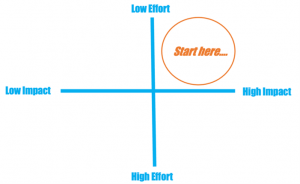Teachers make thousands of decisions every day. Many are easy, but others are complex and stressful. At times, there are the decisions made in the moment where we need to respond straight away and think on our feet. Where possible, we’ll try and put in a bit of planning to ensure that we are well-prepared.
Some of these decisions are made in isolation, but you’ll need to make others with your colleagues. When we sit around with our team, we’re often not consciously aware of one of the most significant decisions we need to make initially. That is, deciding how to decide, or simply deciding on the process that will move us forward to a better place?
When it comes to making decisions with others in your team, how you decide is often more important than what you decide on. It can be tempting to plunge straight into the content of your meeting or try and jump straight to the outcome that will fix a problem. After all, a quick meeting is a good meeting. Take some time to plan your processes and approach. Getting the process right isn’t about creating a democracy or a consensus decision. It’s also not aimed at harmony.
Making decisions can come with risks and judgement, where opinions and bias can quickly override logic. This can be followed by blame. When we get the process right, we are more likely for people to understand and accept our decision. We’ll also create a stronger sense of ownership and maybe find the answer we didn’t even consider.
So, how do you best protect the integrity of your team’s decisions? How do you create fairness, especially when you don’t have consensus or agreement? Where do you start? How do you decide the most important step to take first?
In the lead up to Term 2, I worked with a Leadership Team on this exact problem. We stumbled across the tool below and felt that it was worth sharing.

- Start by brainstorming all your ideas or actions and get them onto a sticky note. One idea or action on each sticky note. Just go crazy, there is no silly idea!
- Using the model above, plot your sticky notes on the most suitable box with consideration for the effort you need to put in and the impact that it will have.
- Now, begin with the High Impact / Low Effort This is work you get onto straight away.
- Park the Low Impact / Low Effort box and the High Effort / High Impact box until later, when you have more time to think it through.
- Finally, discard the Low Impact / High Effort box. It’s just not worth doing.
This quick and easy process will help you prioritise your decisions for tomorrow and plan for the future.

Check out other articles Simon has written here.